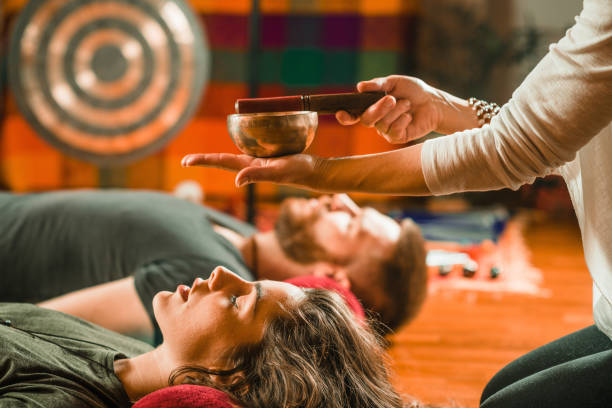Sculpting Serenity: The Rise of Salt Cave Therapy
In a world where stress and pollution reign supreme, urban dwellers are increasingly seeking refuge in the most unexpected of places: salt caves. These tranquil, shimmering grottos are not natural formations, but rather meticulously crafted wellness spaces designed to harness the healing power of salt. As the beauty and fitness industry continues to evolve, salt cave therapy has emerged as a unique fusion of ancient wisdom and modern science. This innovative approach to wellness is capturing the attention of health enthusiasts and skeptics alike, promising a range of benefits from improved respiratory function to enhanced skin health. But what exactly is salt cave therapy, and why is it gaining traction in the realm of holistic wellness? Let's delve into the salty world of this emerging trend and explore its potential to reshape our approach to self-care and rejuvenation.

The modern salt cave, however, is a relatively recent innovation. In the 1980s, Russian doctors began creating artificial salt caves to replicate the microclimate of natural salt mines. They used halogenerators to disperse fine salt particles into the air, creating a controlled environment for therapeutic purposes. This marked the birth of halotherapy as we know it today, setting the stage for its global spread and eventual integration into the wellness industry.
The Science Behind Salt Cave Therapy
At the heart of salt cave therapy lies the principle of negative ion generation. When salt is heated or agitated, it releases negative ions into the air. These ions are believed to have various health benefits, including improved mood, reduced stress, and enhanced cognitive function. In salt caves, the concentration of negative ions is significantly higher than in everyday environments, creating what proponents describe as a rejuvenating atmosphere.
Moreover, the salt particles in these caves are said to have antimicrobial and anti-inflammatory properties. When inhaled, these microscopic particles can potentially help clear the airways, reduce inflammation, and alleviate symptoms of respiratory conditions such as asthma, allergies, and bronchitis. Some studies have shown promising results in this area, though more research is needed to fully substantiate these claims.
The high salt concentration in these caves also creates a hypertonic environment on the skin’s surface. This is believed to draw out impurities and excess water from the skin, potentially improving skin conditions like eczema and psoriasis. While anecdotal evidence supports these benefits, scientific research in this area is still ongoing.
The Modern Salt Cave Experience
Today’s salt caves are a far cry from the natural caverns of old. These purpose-built spaces are designed to create a multi-sensory experience that combines the therapeutic properties of salt with elements of relaxation and mindfulness. Walls and floors are typically covered in tons of pink Himalayan salt, chosen for its aesthetic appeal and mineral content. Soft lighting, often emanating from strategically placed salt lamps, bathes the room in a warm, pinkish glow.
The atmosphere in these caves is carefully controlled. Temperature and humidity are maintained at optimal levels to enhance the therapeutic effects of the salt. Many facilities use halogenerators to disperse pharmaceutical-grade salt into the air, ensuring a consistent concentration of salt particles throughout the session.
Sessions typically last between 30 to 60 minutes, during which guests recline in comfortable chairs, often wrapped in blankets. Some facilities offer guided meditation or soft music to enhance relaxation. The overall effect is one of deep tranquility, with many users reporting a sense of calm and well-being that lasts well beyond their time in the cave.
Beyond Respiratory Health: Unexpected Benefits
While respiratory health remains the primary focus of salt cave therapy, enthusiasts and some researchers are exploring its potential benefits in other areas of wellness. One intriguing avenue is its impact on skin health. The salt-rich environment is thought to have exfoliating and detoxifying effects on the skin, potentially helping with conditions like acne, eczema, and premature aging.
Some practitioners also suggest that salt cave therapy may have positive effects on mental health. The calming environment, combined with the purported mood-enhancing effects of negative ions, is said to reduce stress and anxiety. While scientific evidence for these claims is limited, many users report feeling more relaxed and mentally clear after their sessions.
Another unexpected application of salt cave therapy is in sports recovery. Some athletes and fitness enthusiasts are incorporating salt cave sessions into their recovery routines, claiming that it helps reduce inflammation and accelerate muscle recovery. While more research is needed to confirm these effects, the growing interest from the sports community is noteworthy.
The Future of Salt Cave Therapy in Wellness
As the wellness industry continues to evolve, salt cave therapy is poised to play an increasingly prominent role. The trend towards natural, non-invasive therapies aligns well with the principles of halotherapy, making it an attractive option for those seeking alternative health solutions.
However, the future of salt cave therapy will likely depend on the outcomes of ongoing scientific research. While current studies show promise, more rigorous clinical trials are needed to fully validate its efficacy and understand its long-term effects. This research could potentially lead to the integration of salt cave therapy into mainstream medical treatments, particularly for respiratory conditions.
The wellness industry is also likely to see further innovations in salt therapy technology. Portable halotherapy devices and at-home salt rooms are already emerging, making this therapy more accessible to a wider audience. As technology advances, we may see more sophisticated and personalized salt therapy options become available.
In conclusion, salt cave therapy represents a fascinating intersection of ancient wisdom and modern wellness trends. Its growing popularity reflects a broader shift towards holistic, nature-inspired approaches to health and well-being. Whether it will become a staple of mainstream wellness or remain a niche therapy remains to be seen, but one thing is clear: the allure of these shimmering salt grottos continues to captivate those in search of natural healing and tranquility in our fast-paced world.





